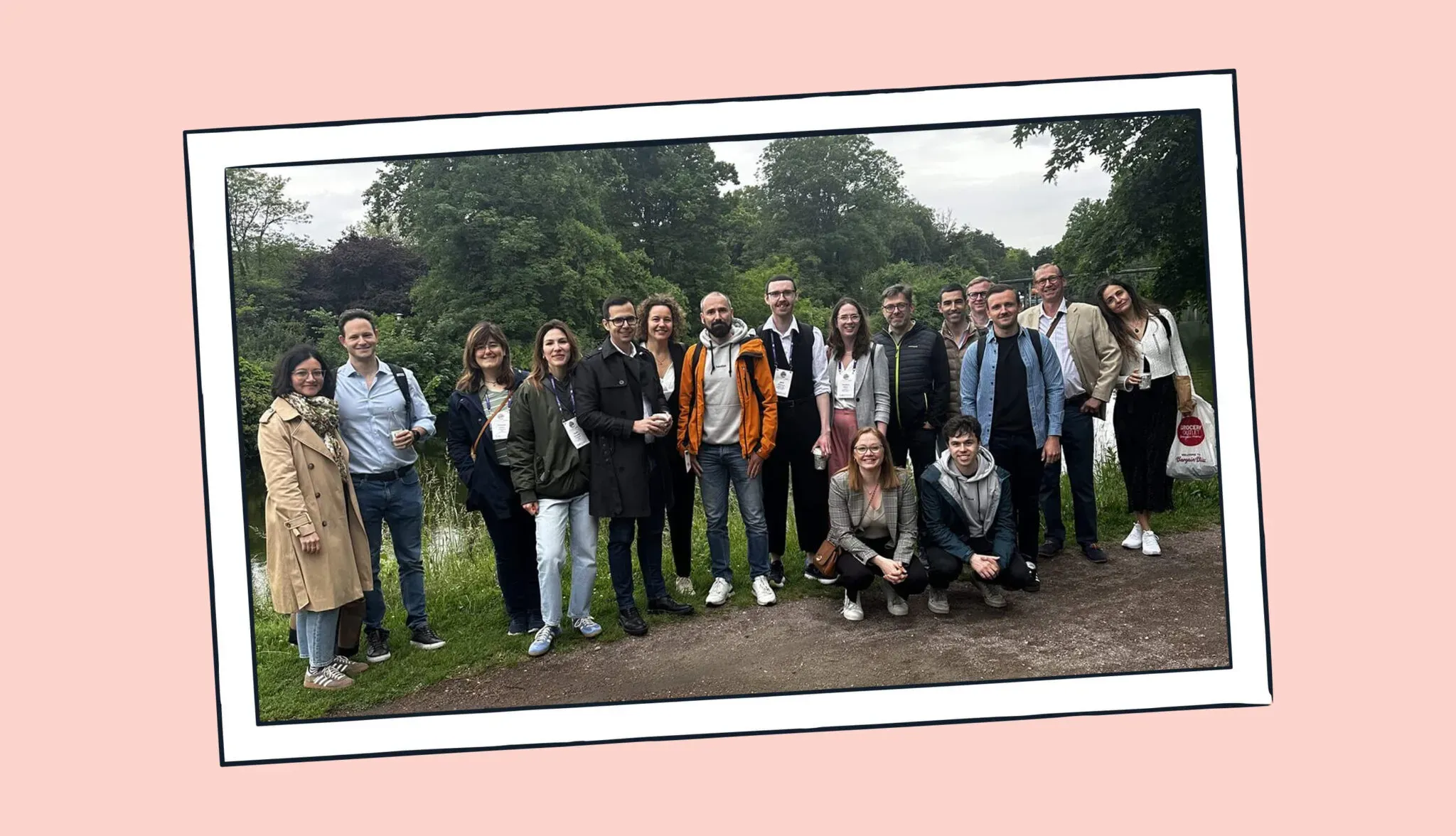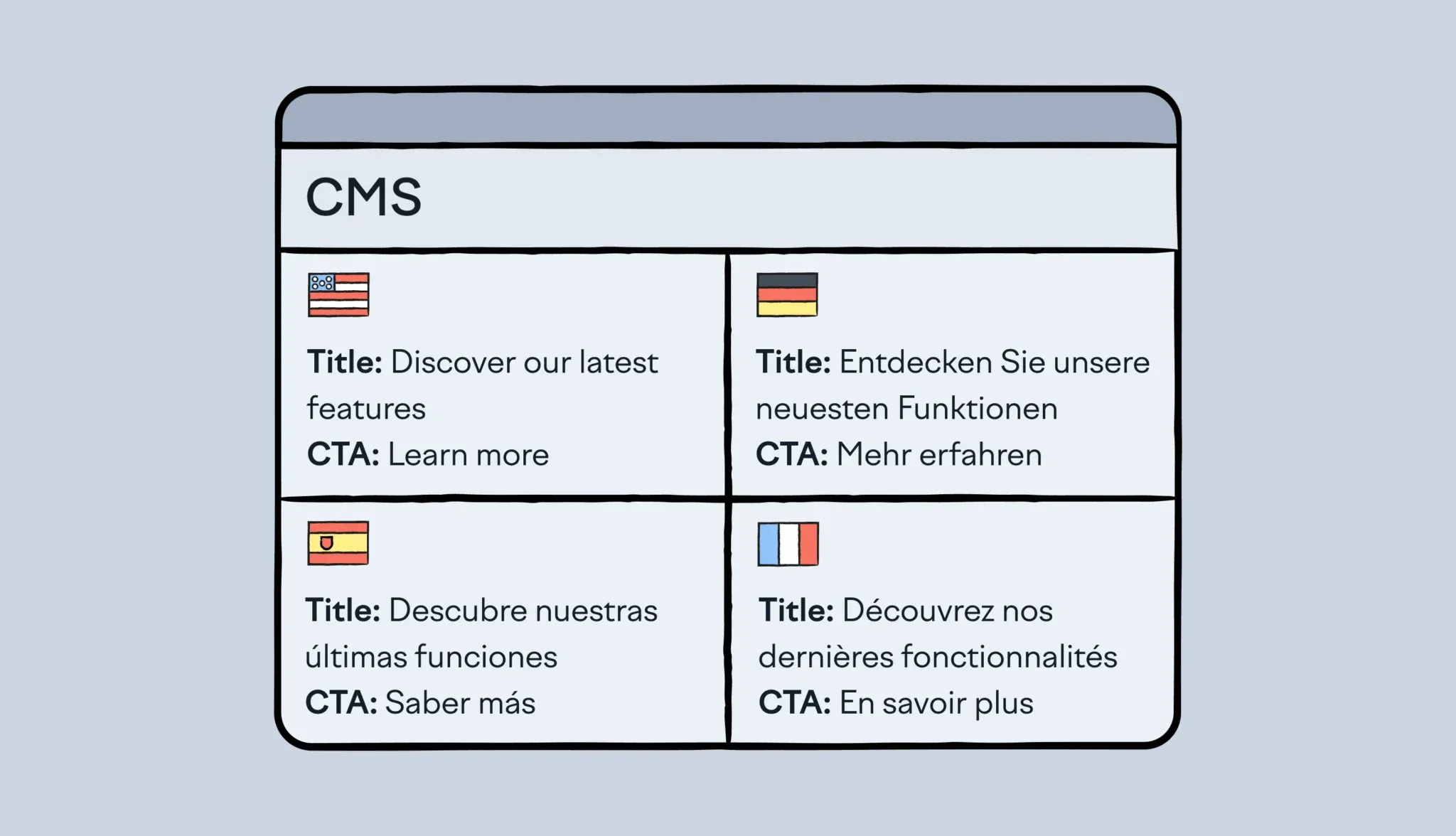
8 Video Game Localization Examples You Won’t Forget
Imagine playing Dragon Quest XI in English where you walk into a quaint little village and hear everyone talking… in haikus. Or what if you start playing Witcher 3 in…

We kicked off LocWorld53 with our first-ever LocWalk, and what an incredible experience it was.
A brisk morning walk through the charming streets of Malmö and plenty of conversations with localization experts who provided valuable insights into market trends, echoed over three jam-packed days at LocWorld53 Malmö.
Our CEO, Sophie Krishnan, and the wider team attended the conference, hopping from one session to the next and stopping to chat with localization experts about the rapidly evolving trends shaping our industry.
Here are the most significant trends that stood out from this year’s LocWorld conference:
💡Insight:
the next frontier is building intelligent, multi-step AI workflows that add value on top of base models. PayPal is building a validator loop that scores translations and prompts the AI for self-correction.
The traditional model of managing translation strings in CAT tools is giving way to orchestrating entire global content creation lifecycles.
PayPal talked about how they’re building end-to-end systems that begin at the design phase and are powered by intelligent, automated AI workflows.
They’re creating value before the first line of code is written—with localization considerations informing design decisions, UI layouts, and content architecture from day one.
💡Insight:
AI for translation has become table stakes. The real value lies in risk mitigation through quality scoring, human reviews, and AI agents that enhance the processes surrounding localization rather than just the translation itself.
Industry experts have shifted from viewing AI as a replacement to a collaborative partner, and are focusing on how to optimize this partnership rather than simply implement AI solutions.
This collaborative AI approach will show up in several key areas:
Linguistic asset optimization: Teams are making sure their source data, style guides, terminology, and glossaries are clean and optimized for AI.
Intelligent workflows: Multi-step AI workflows with automatic quality scoring and prompting AI for self-correction will facilitate the localization process, rather than just the translation process.
On-demand visual context: One of the most exciting developments is AI’s ability to automatically analyze source files and generate context for translators—not just comments, but auto-generated screenshots or SVG mockups showing where strings appear in the UI.

💡Insight:
Data and analytics are now critical for understanding how to optimize your localization program at the market level.
Teams are now expected to build programs underpinned by data and analytics, with every decision validated by measurable results.
Teams are A/B testing different workflows to assess customer market tolerance for risk versus quality, driving more sophisticated, market-specific approaches.
The level of localization needed varies from one country to the next, so companies can potentially take more risks in markets like Brazil where you can get away with a lot more vs Japan that has no tolerance for mistakes.
Buyers increasingly want to understand what content drives business results and deserves investment, leading to more agile, test-and-learn approaches to localization program development.
Advanced programs are shifting from product-based to market-level approaches, analyzing data from a customer journey perspective to identify the most valuable content for resource allocation.

💡Insight:
With AI handling initial translation, the industry’s attention has shifted dramatically to the ‘last mile’ of the localization process, which is all about quality.
As AI becomes the default first step in translation workflows, human translation is increasingly viewed as a luxury. Companies are adopting AI-first hybrid models where humans are included only when needed. But this shift has intensified focus on quality assessment and optimization.
Localization teams are still grappling with both objective and subjective quality measures, making it difficult to determine where human intervention adds the most value. The industry is moving beyond simple ‘good enough’ thresholds toward sophisticated quality frameworks that can differentiate between content that needs a human touch and content that can flow directly from AI to publication.
Success depends on the ability of organizations to build data-driven testing and optimization systems that continuously refine their understanding of quality across different content types, markets, and use cases. Those that master this ‘last mile’ optimization, knowing precisely when and where to deploy human expertise, will have a significant competitive advantage in both quality and cost efficiency.
💡Insight:
Localization experts are increasingly called upon to support other business functions, requiring new approaches to collaboration and stakeholder management.
Localization teams are no longer just service providers reacting to content requests, but strategic partners orchestrating global content ecosystems that manage creative adaptation, brand voice alignment, and market-specific optimization alongside traditional translation workflows.
TeamViewer’s success story illustrates this trend perfectly.
Their breakthrough came not from better technology, but from localization teams empowering colleagues to make informed decisions about risk and machine translation suitability—a distinctly human-centered approach to solving the last-mile challenge.
💡Insight:
Localization teams are evolving from service providers to to cultural advisors who attract strategic support and budget allocation, and guide global decision-making before content is even created.
The very definition of localization is expanding to include creative adaptation, brand voice alignment, and strategic risk management. As Kerstin Berns, Managing Partner of Berns Language Consulting GmbH says, teams should position themsleves as ‘creators of cultural worlds’ and consider roles like civilization engineers, becoming gatekeepers of cultural storytelling and emotional resonance.
Notion’s successful rebranding story, which was well-received at the conference, exemplifies how localization teams are repositioning themselves to attract strategic support and budget allocation.
Their approach to “scaling down to scale up”—being selective about where to invest human expertise while leveraging AI for broader coverage—has become a blueprint for attracting C-suite support and budget allocation.
They’re using direct integrations with machine translation and large language models for high-volume, user-generated content, while maintaining traditional TMS workflows for their core product experiences. This allows them to handle infinite translations for low-risk content while preserving quality and brand consistency for their most critical touchpoints.
As one presenter put it in a challenge to the audience: “Commit to doing something different, experiment, and be less risk-averse.”
Those who embrace data-driven decision making, master the art of ‘last mile’ localization, and successfully embed localization throughout the org will be uniquely positioned to orchestrate sophisticated AI-enhanced workflows while leaning on human insight for cultural adaptation and strategic decision-making.
Author
With a background in brand and revenue marketing, Brittany helps global companies scale localization efforts that not only meet quality standards but also drive real business results.

Imagine playing Dragon Quest XI in English where you walk into a quaint little village and hear everyone talking… in haikus. Or what if you start playing Witcher 3 in…

Top Things to Know: What is CMS Localization? Content Management System (CMS) localization—also known as CMS internationalization, or CMS translation—consists of configuring your CMS to open your content to different…

Marketing translation works like a bridge between cultures. A sturdy bridge can carry your ideas and messages safely across. But a shaky one built on weak foundations? It can damage your brand and break your bond with buyers. What is translation in the context of marketing? It goes beyond literal swaps. It delves much deeper to capture emotions, convey the right

Behind the scenes of localization with one of Europe’s leading digital health providers
Read more Case studies
Localization workflow for your web and mobile apps, games and digital content.
©2017-2025
All Rights Reserved.